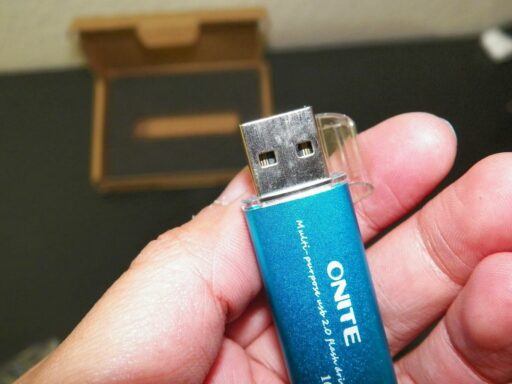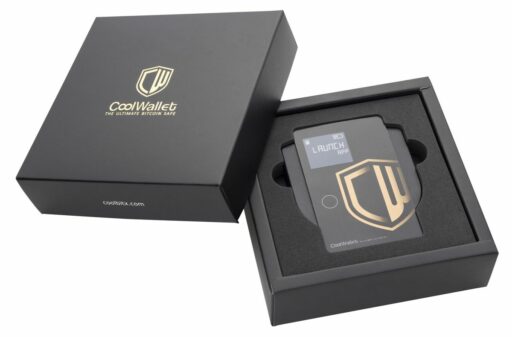In the expansive sea of cryptocurrency exchanges, finding the right platform requires careful consideration of your trading preferences and priorities. Whether you prioritize a global giant like Binance, the user-friendly experience of Coinbase, or the security-centric approach of Bittrex, each exchange has its unique strengths. As you embark on your cryptocurrency trading journey, use this guide as a compass to navigate the crypto seas and find the exchange that suits your needs, allowing you to
Key Takeaways
- Identify exchange platforms with robust security measures and legal compliance to safeguard your digital assets.
- Choose a user-friendly exchange that caters to both novice traders and experts, ensuring a seamless trading experience.
- Select a platform offering a diverse range of cryptocurrencies and trading pairs to maximize trading opportunities.
- Understand the importance of liquidity and trading volume in cryptocurrency exchanges to execute trades efficiently.
- Evaluate the quality of customer support and educational resources to enhance your trading skills and resolve issues.
Identifying Key Features That Set Apart Superior Exchange Platforms

Security Measures and Legal Compliance
Security in the digital currency world is a paramount consideration. The difference between a trustworthy trading platform and a risky one can hinge on its security features. Look for platforms that boast strong encryption, continuous surveillance, and defense mechanisms against potential breaches. Key security features might include data encryption, secure servers, regular audits, and transparent operational practices. These characteristics are not just buzzwords but lifelines ensuring your assets are protected.
Regulatory compliance adds an extra layer of legitimacy and trust to a trading platform. It’s crucial to consider exchanges that adhere to regulatory standards. This compliance ensures that the platform is operating within the legal framework and is taking the necessary steps to protect its users from financial crimes and other risks.
Cryptocurrency exchanges or wallet providers may freeze assets as a precaution against unauthorized access attempts, suspicious activity, or security breaches.
Here’s a quick checklist to help you evaluate a platform’s security and compliance:
- Top-notch Security: Multiple layers of protection for your digital assets.
- Legal Compliance: Adherence to regulatory standards and legal requirements.
- Transparent Fees: Clear and upfront about all charges involved in trading.
User Experience: From Novice to Expert
The importance of user experience in your trading journey cannot be overstated. A platform that offers a seamless and intuitive interface can significantly enhance your ability to trade effectively. For novices, this means an exchange that provides clear guidance and educational tools to help them navigate the complexities of cryptocurrency trading.
- Educational Tools: Essential for beginners to learn the ropes.
- Simple Navigation: Saves time and reduces frustration.
- Quick Transaction Times: Ensures timely execution of trades.
- Cross-Platform Consistency: Allows for trading on-the-go.
An exchange that feels like a piece of cake rather than an enigma can transform your trading experience, making it accessible and less intimidating.
For expert traders, the user experience extends to advanced charting tools, API access for algorithmic trading, and a robust support system to tackle any hurdles encountered. The right platform evolves with you, scaling from basic functionalities to sophisticated features as your skills and strategies develop.
Diversity of Cryptocurrencies and Trading Pairs
The crypto market is a vast ocean, teeming with a multitude of digital assets each offering unique opportunities and challenges. Diversifying your investments across different types of digital assets can not only minimize risk but also open up new trading strategies. A well-rounded exchange platform will provide a wide array of cryptocurrencies and trading pairs, catering to the varied interests and strategies of traders.
The key to successful crypto trading is not just in the selection of a single currency but in the composition of your entire portfolio.
When evaluating exchange platforms, consider the following:
- Greater Cryptocurrency Variety: A broad range of digital assets for trading allows for a more flexible and robust investment strategy.
- Advanced Trading Features: Look for platforms that offer features like margin trading and derivatives contracts to enhance your trading experience.
- Higher Trading Volumes: Exchanges with higher trading volumes ensure greater liquidity for most cryptocurrency pairs, which is crucial for executing trades efficiently.
Remember, a diverse portfolio is akin to a well-balanced armada, ready to navigate the fluctuating tides of the crypto markets.
Understanding Cryptocurrency Exchanges: A Trader’s Perspective

The Role of Exchanges in the Crypto Ecosystem
Cryptocurrency exchanges are the linchpins of the digital currency world, providing essential services that facilitate the entry and participation of both individuals and institutions. Centralized exchanges, in particular, have carved out a synergistic role within this ecosystem. They act as the intermediaries that bridge the gap between traditional finance and the burgeoning world of cryptocurrencies, offering platforms that are both secure and user-friendly.
- Centralized exchanges offer liquidity, which is vital for the adoption and stability of cryptocurrencies.
- They enable the conversion of fiat to crypto and vice versa, broadening access to digital assets.
- Exchanges provide custody and wallet management, simplifying the experience for those without technical expertise.
Centralized exchanges enhance the functionality and reach of the cryptocurrency market, contributing to its growth and making it more inclusive. Their presence is a testament to the evolving nature of financial systems, where innovation and tradition converge to create new opportunities for investment and trade.
Comparing Centralized vs. Decentralized Platforms
When choosing a cryptocurrency exchange, traders must consider the fundamental differences between centralized and decentralized platforms. Centralized exchanges are managed by a single entity, providing a user-friendly interface, high liquidity, and customer support. However, they carry centralization risks, such as potential hacking attacks and limited anonymity due to identity verification requirements.
On the other hand, decentralized exchanges (DEXs) offer a peer-to-peer trading environment that enhances user autonomy and privacy. They eliminate the need for a middleman, reducing the risk of hacking and fraud. Despite these advantages, DEXs often face challenges with lower liquidity and may not support fiat currency trading.
The choice between centralized and decentralized platforms hinges on a trade-off between convenience and control. While centralized exchanges offer ease of use and robust customer support, decentralized platforms prioritize security and privacy.
Here’s a quick comparison of the pros and cons:
-
Centralized Exchanges:
- User-Friendly Interface
- High Liquidity
- Customer Support
- Security Measures
- Centralization Risks
- Limited Anonymity
- Potential Downtime
- Regulatory Compliance
-
Decentralized Exchanges:
- Decentralization
- Wide Range of Payment Options
- Privacy and Anonymity
- Lower Liquidity
- Limited Fiat Currency Support
Evaluating Liquidity and Trading Volume
Liquidity and trading volume are critical metrics for any crypto exchange, as they reflect the ease with which assets can be bought or sold at stable prices. High liquidity indicates a vibrant market with numerous participants, which typically leads to tighter spreads and less price slippage.
Liquidity is not just about the volume but also the ability to execute orders at the desired price without significant market impact.
When evaluating exchanges, consider the average volume traded over a given period. This can often be found in the exchange’s market data or through third-party analysis sites. Here’s a simplified example of how trading volume might be presented:
| Exchange | 24h Volume (BTC) | 24h Volume (USD) |
|---|---|---|
| Exchange A | 10,000 | $500,000,000 |
| Exchange B | 5,000 | $250,000,000 |
| Exchange C | 1,000 | $50,000,000 |
Remember, a platform’s liquidity can vary significantly across different trading pairs, so it’s important to check the specific assets you’re interested in. Additionally, be aware that high volume doesn’t always equate to high liquidity, as some exchanges may have wash trading or other manipulative practices that inflate their volume figures.
Choosing the Right Cryptocurrency Platform for Your Trading Goals

Assessing Your Trading Style and Requirements
When venturing into the world of digital currencies, it’s crucial to align your trading platform choice with your personal trading style and goals. Whether you’re a day trader looking for quick turnarounds or a long-term investor seeking stability, the platform you choose should cater to your approach.
- Day Traders: Require platforms with low latency, real-time data, and advanced charting tools.
- Swing Traders: Benefit from platforms offering detailed analysis tools and a variety of technical indicators.
- Long-Term Investors: Should look for platforms with robust security features and cold storage options.
Remember, a platform’s user experience can greatly influence your trading efficiency. Opt for one that offers a seamless and intuitive interface, allowing you to execute trades swiftly and accurately.
Fee structures are another critical aspect to consider. Transparent pricing and a fee schedule that complements your trading frequency and volume can make a significant difference in your profitability. High fees can erode your earnings, so choose wisely to keep your financial ship steady.
Navigating Fees, Costs, and Other Expenses
When selecting a cryptocurrency trading platform, understanding the fee structure is crucial. Transparent pricing is key, as unexpected fees can diminish your returns. It’s important to consider how these costs align with your trading frequency and volume.
Fees can vary widely between platforms, and they can significantly impact your profitability, especially if you engage in frequent trading.
Here’s a simplified breakdown of common fees you might encounter:
| Fee Type | Description |
|---|---|
| Trading Fees | Charged per trade, based on a percentage. |
| Withdrawal Fees | Fees for moving your crypto off the platform. |
| Deposit Fees | Costs for adding funds to your account. |
| Inactivity Fees | Charges for dormant accounts. |
Remember, while low fees are attractive, they should not be the sole factor in your decision. The overall value provided by the exchange, including security, user experience, and available tools, should also weigh heavily in your choice.
The Importance of Customer Support and Community
In the volatile world of cryptocurrency trading, customer support can make or break the user experience. A platform’s commitment to providing timely and effective assistance is not just a service but a cornerstone of trader confidence.
- Stellar Support: Platforms that prioritize customer service ensure that traders are never left in the dark. Whether it’s troubleshooting common issues or navigating complex trades, having access to knowledgeable support is invaluable.
- Community Engagement: Social listening tools could provide insights into community sentiments, helping stakeholders understand the strengths and weaknesses of each platform. Traders who engage with the community can gain a competitive edge by staying informed about market trends and platform updates.
The true test of a platform’s dedication to its users is seen in the robustness of its support system and the vibrancy of its community.
Platforms that go the extra mile to offer comprehensive resources, such as informational articles and tutorials, demonstrate a genuine interest in the user’s journey. It’s essential for traders to know that help is just a few steps away and that the platform is equipped to join them in their fight against the uncertainties of the digital currency landscape.
How to Pick the Best Crypto Exchange for Yourself

Conducting Thorough Research and Reviews
Before committing to a cryptocurrency exchange, it’s crucial to conduct thorough research and read reviews from various sources. This due diligence helps in understanding the strengths and weaknesses of each platform, ensuring that your chosen exchange aligns with your trading needs and expectations.
- Verify User Ratings and Reviews: Look for customer feedback and reviews from other traders to gauge the exchange’s reputation.
- Investigate Exchange Features: Assess the platform’s security, user interface, supported cryptocurrencies, and additional services.
- Test the Platform: If possible, use a demo account to get a hands-on feel for the trading environment and tools.
- Evaluate & Rank: Compare your findings with other exchanges to determine which offers the best combination of features and reliability.
When evaluating exchanges, consider not just the number of positive reviews, but also the quality and detail of the feedback. A platform with a smaller number of high-quality, detailed reviews may be more trustworthy than one with a large number of superficial endorsements.
Understanding Regulatory Compliance and Risks
When venturing into the world of cryptocurrency trading, understanding the regulatory compliance and risks associated with different platforms is crucial. Regulatory compliance ensures a level of legitimacy and trust, which is essential in a market that is still in its formative years. Exchanges that adhere to regulatory standards are less likely to expose users to legal risks and compliance challenges.
It’s important to recognize that regulatory frameworks vary across jurisdictions, which can impact the services available to you and the level of protection you can expect.
Here are some of the risks associated with non-compliance:
- Centralization Risks: Centralized platforms may pose risks such as hacking attacks or insolvency.
- Limited Anonymity: Exchanges requiring identity verification can compromise user privacy.
- Potential Downtime: Technical issues or maintenance can disrupt trading activities.
Always consider these factors when choosing a platform to ensure that it aligns with your risk tolerance and trading strategy.
Utilizing Demo Accounts and Educational Resources
Embarking on the crypto trading journey requires not just enthusiasm but also a solid foundation of knowledge. Demo accounts serve as a risk-free training ground for both beginners and experienced traders to test strategies and get familiar with the platform’s interface without the pressure of real capital at stake. Here’s how to make the most of these tools:
- Start with a demo account to practice trading maneuvers.
- Explore the platform’s educational resources to understand market dynamics.
- Engage with interactive learning such as quizzes and earn programs.
By leveraging demo accounts and educational resources, traders can gain confidence and competence, which are crucial for navigating the volatile waters of cryptocurrency markets.
Platforms like Coinbase not only offer demo trading but also incentivize learning through earn programs. Users can watch educational videos, take quizzes, and receive crypto rewards directly in their wallets. This approach not only enriches your knowledge but also builds your digital asset portfolio. Remember, the best crypto copy trading platforms provide ample opportunities to observe and replicate the strategies of profitable traders.
Conclusion
In the vast and dynamic realm of digital currencies, choosing the right trading platform is akin to setting sail in the right vessel. As we’ve explored the diverse array of cryptocurrency exchanges, it’s clear that each platform offers a unique set of features tailored to different trading styles and priorities. From the robust security measures of Crypthub to the user-friendly interfaces of platforms like Coinbase, traders have the luxury of choice in today’s market. It’s essential to weigh factors such as ease of use, currency options, and legal compliance when selecting your digital harbor. Remember, the best exchange for you is one that not only meets your immediate trading needs but also aligns with your long-term investment strategy. With the insights and tips provided in this guide, you’re now equipped to navigate the crypto seas with confidence and make informed decisions that will steer your digital wealth towards prosperous horizons.
Frequently Asked Questions
What are the key features to look for in a superior cryptocurrency exchange platform?
When evaluating a cryptocurrency exchange, look for robust security measures, legal compliance, a user-friendly experience for both novices and experts, and a diverse range of cryptocurrencies and trading pairs.
How do centralized and decentralized cryptocurrency platforms differ?
Centralized platforms are managed by a single entity that oversees transactions, providing higher liquidity and often more advanced trading features. Decentralized platforms allow for peer-to-peer transactions without a central authority, offering more privacy and control over funds.
Why is liquidity important in a cryptocurrency exchange?
High liquidity indicates a healthy trading environment where orders can be executed quickly and at stable prices, reducing the risk of market manipulation and ensuring that traders can buy or sell their assets efficiently.
How should I assess my trading style and requirements when choosing a cryptocurrency platform?
Consider your trading frequency, the types of assets you want to trade, your risk appetite, and whether you need advanced trading tools. Choose a platform that aligns with these factors and provides the necessary resources and support.
What types of fees should I be aware of when trading cryptocurrencies?
Be aware of trading fees, withdrawal fees, and any other hidden costs. Some platforms charge a flat fee per transaction, while others use a maker-taker fee model. Always read the fee schedule carefully before starting to trade.
How can I ensure the cryptocurrency exchange I choose is regulatory compliant?
Check the exchange’s licensing and regulatory status in your jurisdiction. Look for platforms that adhere to Know Your Customer (KYC) and Anti-Money Laundering (AML) regulations, as these are indicators of a commitment to legal compliance.





